Raigad Fort: A Symbol Of The Rich History Of Maharashtra
Updated on : 30 January, 2025
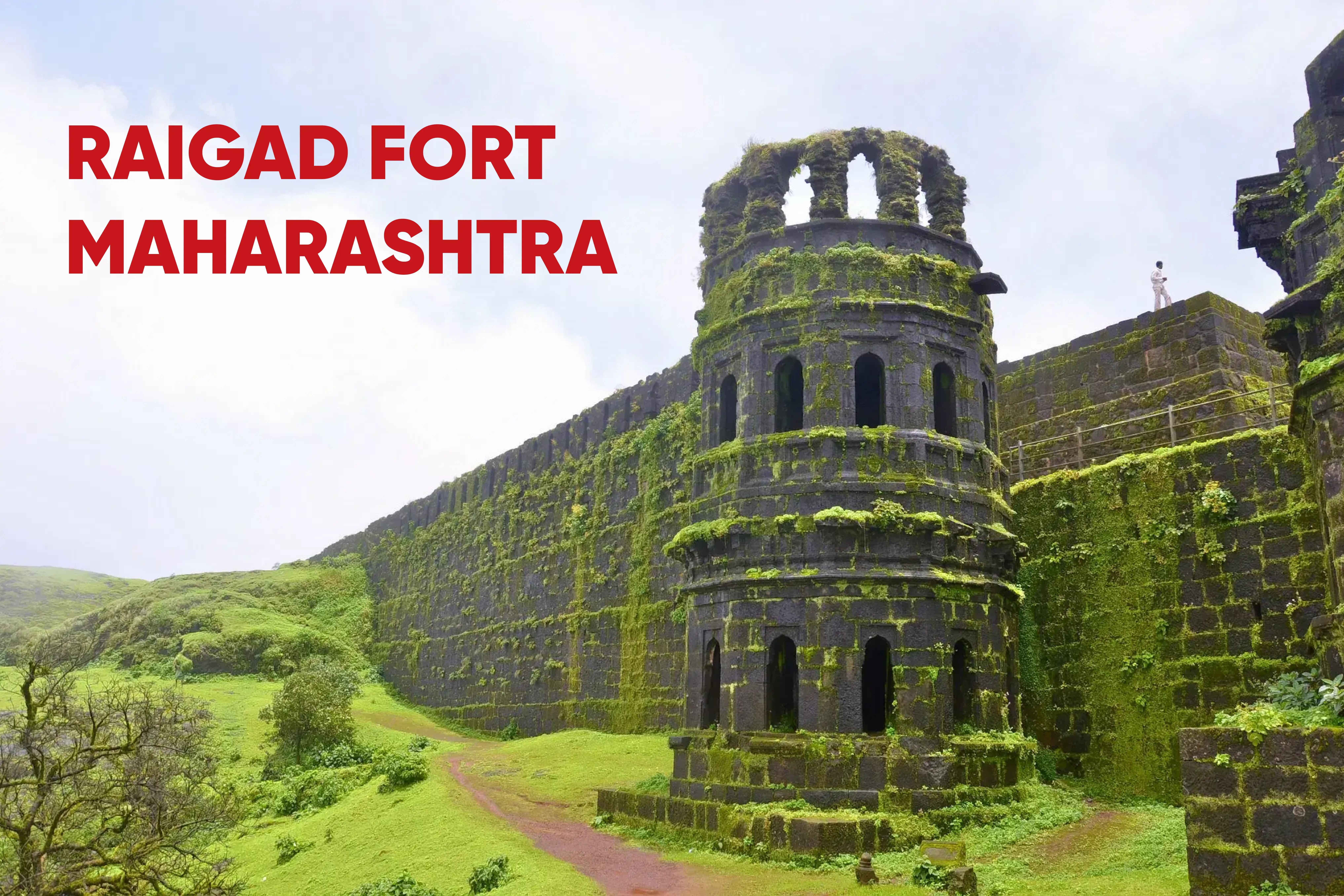
Image Source: thrillophilia.com
Introduction
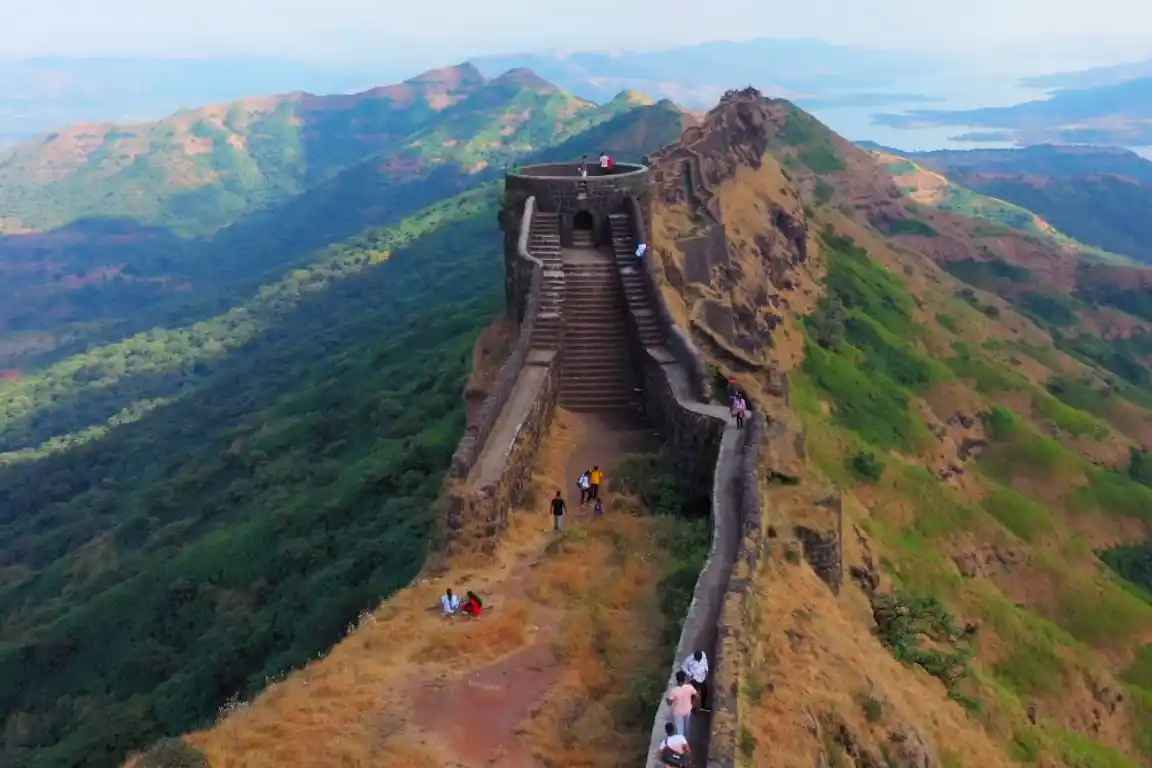
Image Source: citybit.in
Raigad Fort, an iconic hill fortress located in the Mahad region of Maharashtra, is a significant historical monument that played a crucial role in the rise of the Maratha Empire. Originally known as Rairi, the fort was seized by the legendary Chhatrapati Shivaji Maharaj in 1656 from Chandraraoji More, a local feudal lord. Under Shivaji's leadership, Raigad was transformed into a formidable stronghold and became the capital of his empire in 1674, following his coronation. Perched atop the Sahyadri mountains, Raigad Fort is often referred to as the "Gibraltar of the East" due to its strategic location and robust defenses. The fort features impressive architectural elements designed to enhance its military capabilities, including multiple gates, watchtowers, and fortified walls. Notable structures within the fort include the Raj Bhavan (royal palace), the queen's quarters, and the majestic throne room where Shivaji held court. Raigad Fort not only symbolizes the valor and vision of Shivaji Maharaj but also stands as a testament to Maharashtra's rich cultural heritage. Today, it attracts numerous visitors who trek its steep pathways to explore its historical significance and enjoy panoramic views of the surrounding landscape.
Historical Significance
- Raigad Fort's Historical Significance:
- Played a pivotal role in the rise of the Maratha Empire under Chhatrapati Shivaji Maharaj.
- Originally known as Rairi, it was constructed in the 12th century.
- Captured by Shivaji in 1656 from feudal lord Chandraraoji More.
- Became the capital of Shivaji's empire in 1674, where he was crowned king.
- Marked a significant moment in Indian history as an assertion of independence from Mughal authority.
- Architectural Brilliance:
- Expansive layout included royal palaces, administrative buildings, and a market spanning over a mile.
- At its peak, housed around 300 stone houses and accommodated a garrison of 2,000 soldiers.
- Designed with a focus on accessibility for allies and impregnable defenses against enemies, making it a strategic stronghold.
- Military and Administrative Role:
- Served as a center for military operations and administration.
- Facilitated the expansion of the Maratha Empire across western and central India.
- Key Historical Events:
- Site of Shivaji Maharaj’s coronation in 1674.
- Played a critical role in battles against Mughal forces.
- Changed hands multiple times after Shivaji's reign but remains a symbol of Maratha resilience.
- Modern-Day Significance:
- Recognized as a cultural landmark attracting numerous visitors.
- Celebrated for its historical importance and connection to Maharashtra's rich heritage.
- Continues to inspire pride and serves as a reminder of the Maratha Empire's impact on Indian history.
Chhatrapati Shivaji Maharaj's Era
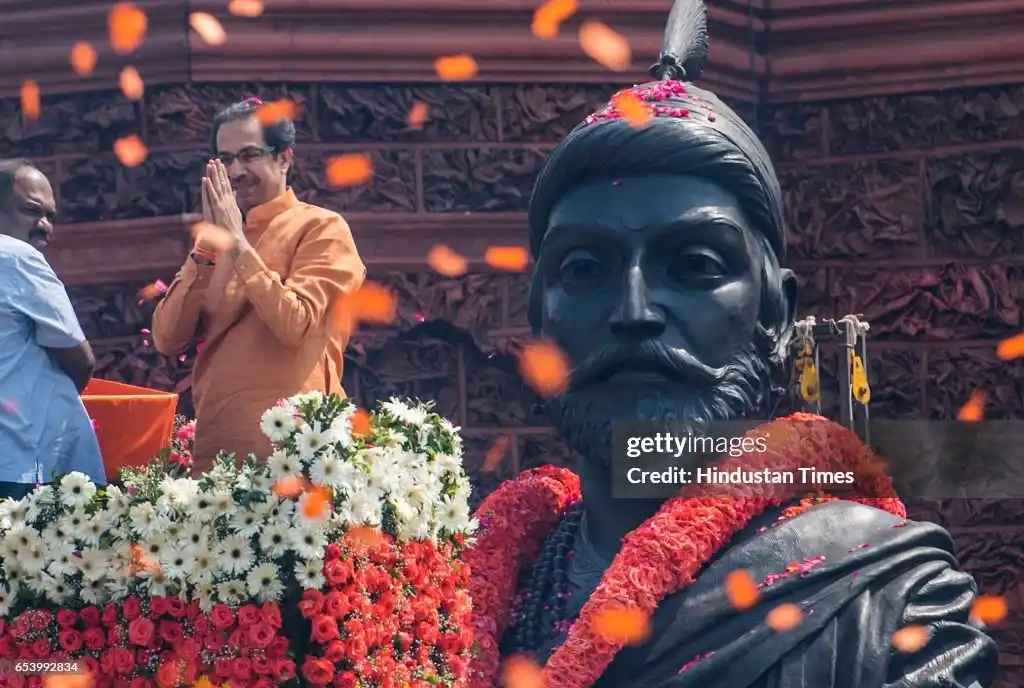
Image Source: gettyimages
- Under Shivaji's rule, Raigad Fort underwent significant renovations and expansions, transforming it into a formidable fortress.
- It featured royal palaces, administrative buildings, and military barracks, reflecting the power of the Maratha Empire.
- The fort is also notable for hosting Shivaji's coronation ceremony, marking a pivotal moment in Indian history as he declared independence from Mughal authority.
Popular Blogs
Architecture and Structure
-
The architectural brilliance of Raigad Fort is evident in its robust stone walls, intricate gates, and the iconic Maha Darwaja.
-
The fort also features the Mena Darwaja, which was used by women of the royal household to visit the nearby Gangasagar Lake.
-
The fort’s unique geographical layout and water management system reflect the engineering prowess of its time.
Defense Mechanisms
-
Fortification Walls: Raigad Fort is surrounded by massive walls that enhance its defensive capabilities. These walls were constructed to withstand sieges and attacks from enemy forces.
-
Multiple Gates: Besides the Maha Darwaja, there are several other entrances such as Palkhi Darwaja (for royal ladies) and Mena Darwaja, which were strategically positioned to control access to the fort.
-
Watchtowers: Structures like Khoob Ladha Burj allowed for surveillance of approaching enemies from all directions. These towers were essential for early warning systems during attacks.
-
Water Reservoirs: The fort is equipped with numerous water reservoirs, including Bara Tanki and Ganga Sagar, ensuring a sustainable water supply during sieges. These reservoirs were ingeniously designed to collect rainwater and store it for use throughout the year.
-
Takmak Tok: This execution point on a steep cliff served as both a deterrent to potential traitors and a grim reminder of the fort's martial law. It exemplifies how natural terrain was utilized in defense strategies.
Significance and Cultural Importance
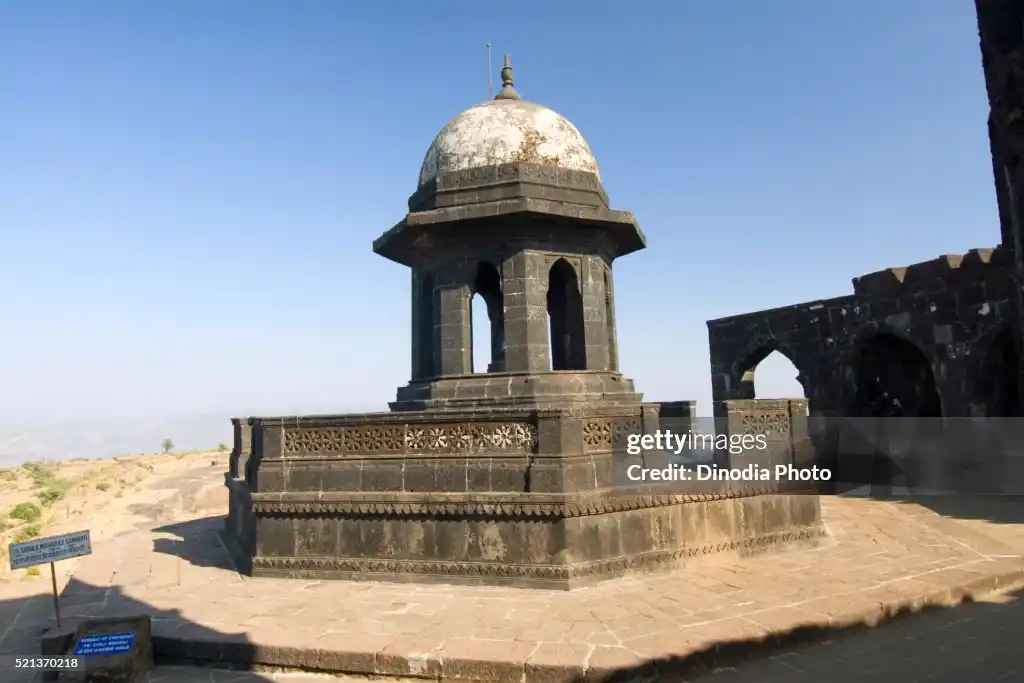
Image Source: gettyimages
-
Raigad Fort symbolizes the valor and vision of Chhatrapati Shivaji Maharaj.
-
It is not merely a structure but a living testament to his ideals of self-governance, military strategy, and administration.
-
The fort has earned a revered place in Maratha history, inspiring generations with its tales of bravery and leadership.
How To Reach Raigad Fort
- Reaching Raigad Fort
- By Air: The nearest major airport is Chhatrapati Shivaji Maharaj International Airport in Mumbai, which is about 170 km away. From the airport, you can easily hire a taxi or take a bus to the base village, Pachad.
- By Road: Raigad Fort is well-connected by road, with direct routes from Mumbai (170 km) and Pune (132 km). You can drive or take a bus to the base village, Pachad.
- By Rail: The nearest railway station is Neral, located about 135 km from the fort. From Neral, taxis and buses are available to take you to Pachad village, where the trek to the fort begins.
Places To Visit In And Around Raigad Fort
- Raigad Museum: Located in Hirkani Wadi, it features artifacts related to the Maratha Empire and Chhatrapati Shivaji Maharaj, including weapons, coins, and personal belongings.
- Jagadishwar Temple: An ancient temple dedicated to Lord Shiva, built during Shivaji's reign, showcasing exquisite architecture.
- Takmak Tok: A viewpoint near the fort, offering breathtaking views and historically significant as a site for executions. It is now a popular trekking destination.
- Gangasagar Lake: An artificial lake known for its serene beauty and picturesque surroundings, originally constructed to provide water for the royal family and nearby villages.
- Sagargad Fort: A nearby historical site offering trekking opportunities amidst lush greenery and stunning sea views, tied to the Maratha Empire.
- Diveagar Beach: A peaceful coastal destination about 6 km from Raigad Fort, known for its clean sands and tranquil waters.
- Morbe Dam: Situated near Khalapur, offering scenic views and popular among nature lovers and adventure seekers.
- Kondana Caves: Ancient Buddhist caves near Raigad, known for intricate carvings and historical significance.
- Shivthar Ghal: A historical site associated with Shivaji Maharaj, featuring a cave where he reportedly sought refuge during his struggles.
- Varsoli Beach: A serene beach near Raigad, perfect for peaceful walks and enjoying coastal scenery.
Best Time To Visit
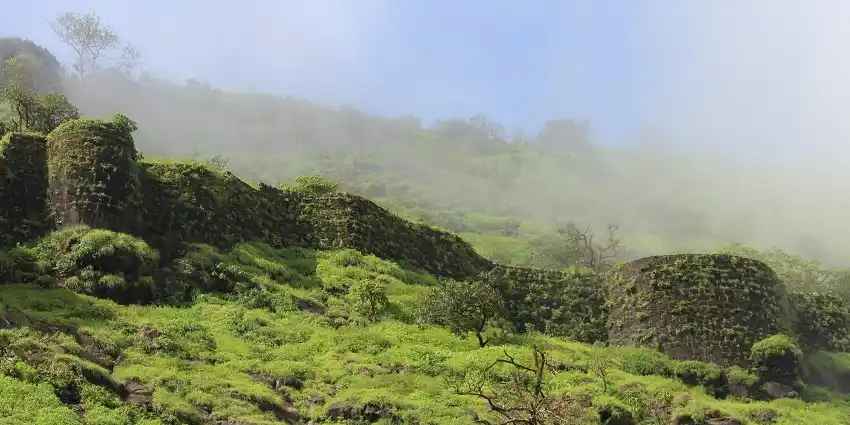
Image Source: tripxl.com
- Ideal months: October to February.
- Weather: Cool and comfortable with temperatures ranging from 20°C to 30°C, perfect for trekking and sightseeing.
- Conditions: Clear skies, low humidity, and pleasant weather for outdoor activities.
- Nearby attractions: This period is also ideal for exploring nearby sites like Shree Jagadishwar Temple, Alibag Beach, and Murud Janjira Fort.
Where to Stay

Image Source: tripxl.com
Accommodation Options Near Raigad Fort
- MTDC Resort: Located near the base of the fort, it offers comfortable rooms with scenic views of the surrounding nature.
- Hotel Raigad: A budget-friendly option in Mahad, just a short distance from the fort.
- Homestays: For a more local experience, you can stay in homestays near the fort, offering personalized service and a chance to interact with the local community.
Other Factors To Consider
- Average Cost of Trip to Raigad Fort
- Trip cost: ₹1,000 – ₹2,500 per person, depending on your travel method.
- Fuel and toll charges: If driving, account for fuel and toll charges.
- Accommodation: MTDC Resort or Hotel Raigad costs ₹1,500 – ₹3,000 per night.
- Meals: Local eateries typically charge ₹300 – ₹500 per meal.
- Tips for Travelers
- Footwear: Wear comfortable shoes as the trek involves steep paths.
- Essentials: Carry water and snacks, as food and drink options are limited on the fort.
- Weather: Be cautious of slippery trails, especially during the monsoon season.
- Photography: Bring your camera—plenty of photo opportunities.
- Respect the environment: Don’t litter and follow local guidelines to keep the fort and surroundings clean.
FAQs
- How long does it take to explore Raigad Fort?
Ans It typically takes 2 to 3 hours to explore the fort, including the trek and key attractions.
- Are there guides available at Raigad Fort?
Ans There are no official guides, but locals often offer informal tours.
- Are there any facilities like restrooms at Raigad Fort?
Ans Basic facilities like restrooms are available at the base village of Pachad, but there are limited facilities inside the fort itself.
- Is there an entry fee for Raigad Fort?
Ans No, there is no entry fee to visit Raigad Fort.
- Is there parking available at Raigad Fort?
Ans Yes, parking is available at the base of Raigad Fort in the village of Pachad, where visitors can park their vehicles before beginning the trek to the fort.
Conclusion
Raigad Fort, with its rich historical significance and stunning architecture, stands as a monument to the valor and vision of Chhatrapati Shivaji Maharaj. As a former capital of the Maratha Empire, it offers a glimpse into India's glorious past and the strategic brilliance of its builders. The surrounding areas enrich the experience further, providing visitors with opportunities to explore ancient temples, serene lakes, and beautiful landscapes. Whether you are a history enthusiast, an adventure seeker, or simply looking to immerse yourself in nature, Raigad Fort and its nearby attractions promise an unforgettable journey through Maharashtra's cultural heritage. ter. With numerous accolades and continued dedication to his craft, Head remains an integral part of Australia's cricketing future.














